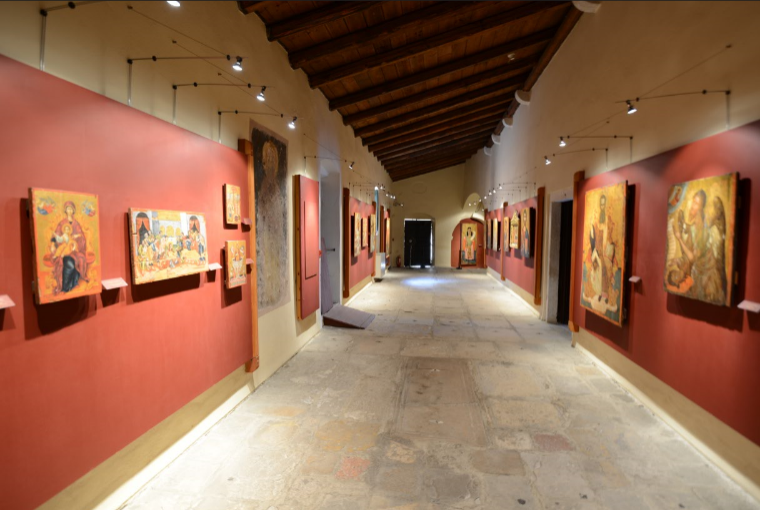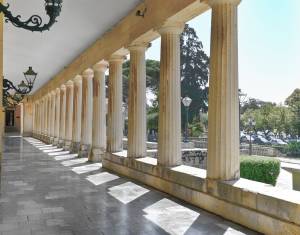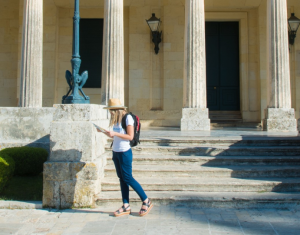Corfu might be renowned for its sandy beaches, crystal clear waters and breathtaking nature but it also has a rich history and culture. One of the best ways to explore Corfu’s impressive cultural heritage is by visiting its museums which feature excellent archaeological findings and hundreds of exhibits which outline the diachronic influence of the island's cultural history. If you are planning to visit the emerald island, we bet you must be wondering: What are the top museums of Corfu? Get ready for an exciting tour and check out our list of the best museums in Corfu that you shouldn't miss during your visit.
Have to add something to this list? Just drop us a line to let us know!
1. Achillion Palace
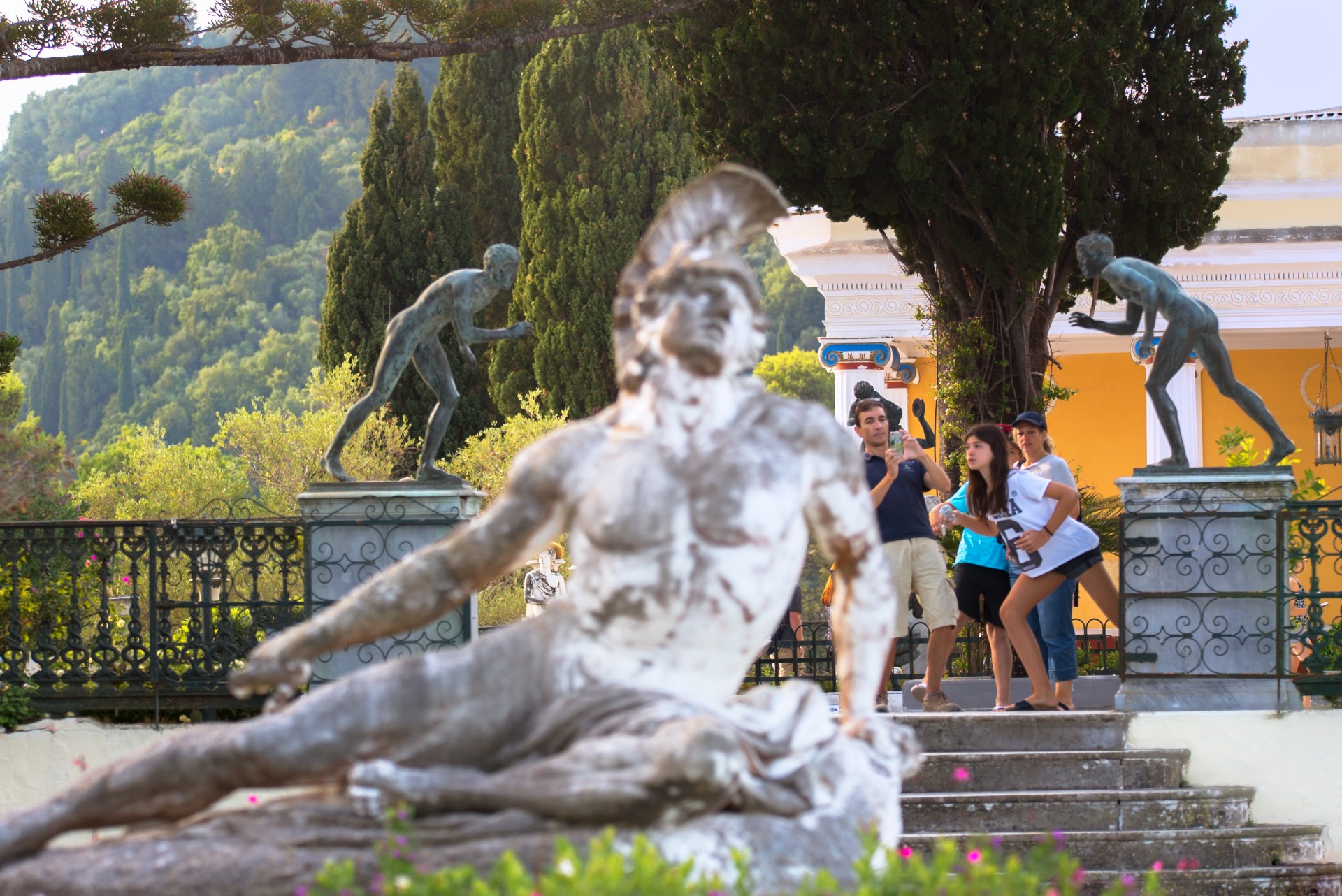
Located in the picturesque village of Gastouri, Achillion Palace is doubtlessly the most visited museum of Corfu and often tops the lists of the most popular attractions of the island. This neoclassical mansion was built in the 19th century as the summer retreat of the Empress Elizabeth of Austria, aka Princess Sissi but now operates as a museum. As you enter the rooms of the Palace, you will get a glimpse of the life of Sissi as you discover her furniture, clothing, jewelry and other personal belongings. The highlight of the Palace is the wonderful gardens offering great views out to the sea and filled with statues of significant Greek historical figures including Greek philosophers, the Nine Muses and naturally the two huge statues of Achilles - the hero of Greek mythology after whom the Palace was named. The museum is open 7 days a week while the exact opening hours vary depending on the time of the year; the museum is open 08.00-20:00 during the summer season (April-October) while during the winter months (November-March) it is open 08.00-16.00.
Update November 2021: Achillion Palace is now temporarily closed for renovation. Once the reopening date will be announced, we will update this space.
2. Archaeological Museum of Corfu
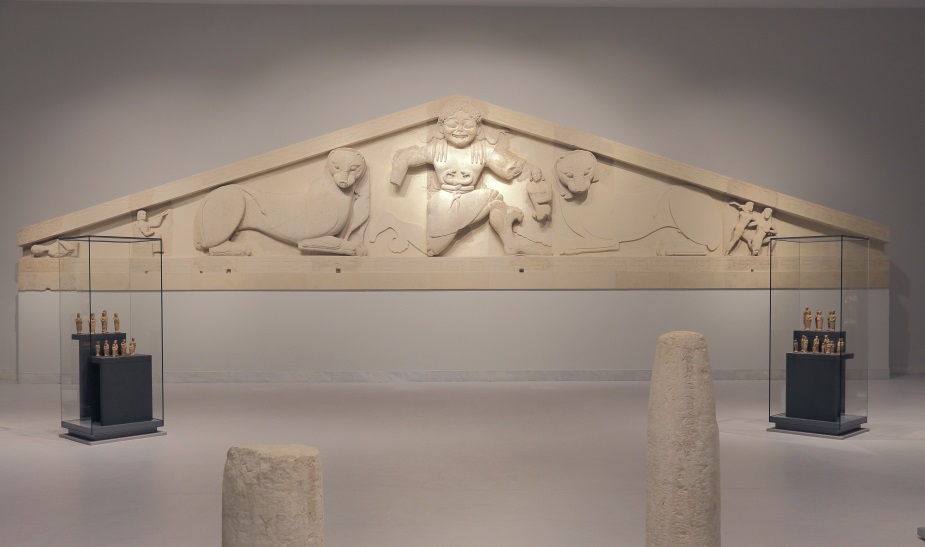
Located in Corfu Town, just a few meters off Garitsa Bay, the Archaeological Museum of Corfu houses fascinating archaeological findings that have been recovered from the ancient city of Corcyra as well as several other excavation sites on the island. The two-storey museum, which is widely considered one of the best museums in Corfu, first opened its doors in 1967 but gained renewed attention in 2019 with its reopening after a major 6-year renovation project. Its wonderful collection contains exhibits from Palaeolithic times till the Hellenistic period including sculptures, statues, vessels and amphorae, bronze medical tools, a rich collection of ancient coins and various other valuable ancient objects. Some of the most remarkable exhibits include the ''Lion of Menecrates'', a limestone pediment from a temple of Dionysus, the 13 identical terracotta statutes of Artemis, and naturally the imposing Gorgona-Medusa pediment from the temple of Artemis, dating from 585 BC, which is also the highlight of the museum. The Archaeological Museum of Corfu is open between 08.30-15.30 everyday of the week except for Tuesdays.
3. Corfu Museum of Asian art
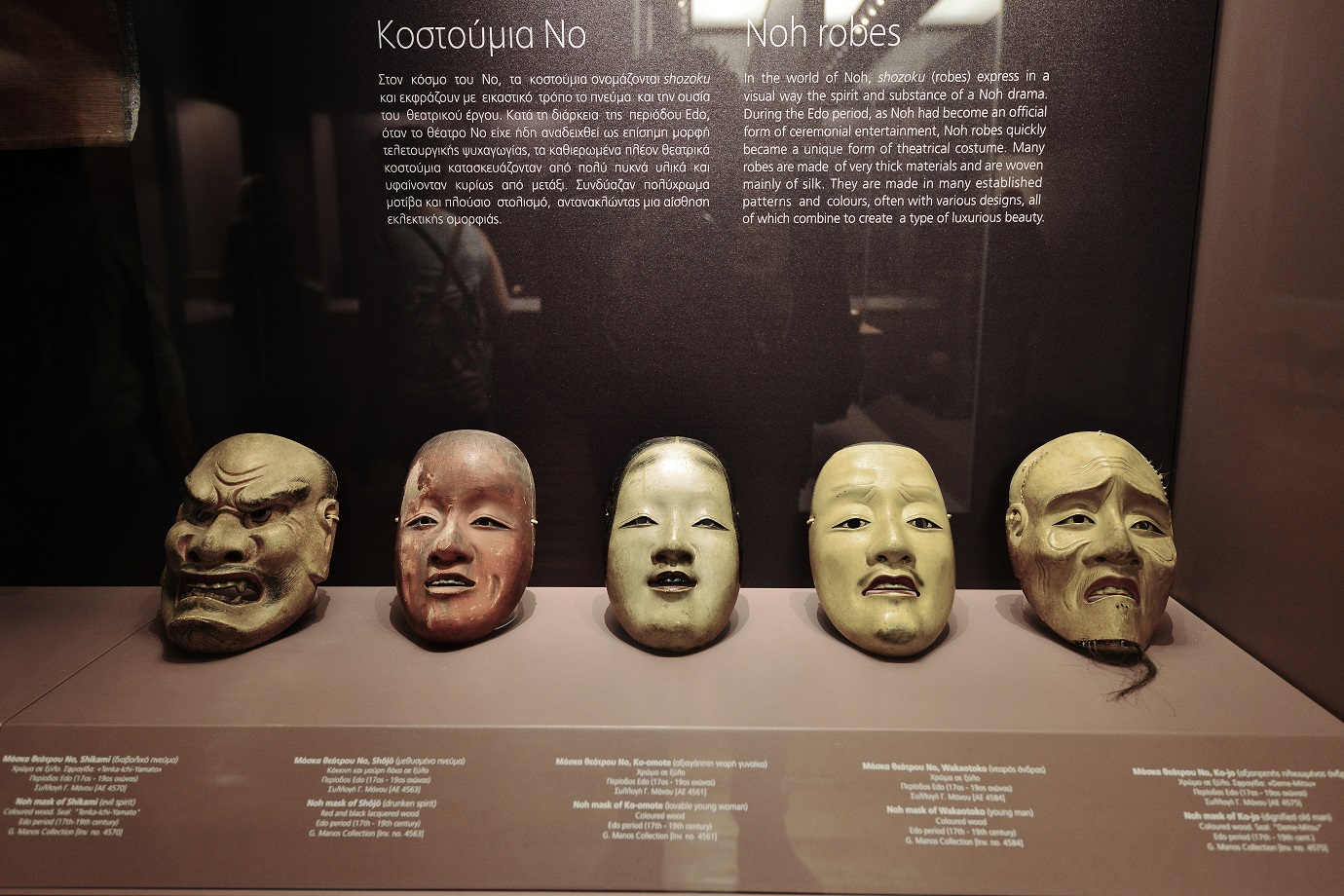
Unique in its kind in Greece, Corfu’s Museum of Asian Art is housed in the impossing Palace of St. Michael and St. George, on the north side of Spianada Square and dedicated to the art and antiquities of the Far East and India. The museum was originally founded in 1928 as the Museum of Sino-Japanese Art following the relavant donation of Gregorios Manos collection to the Greek state, but was later enriched with many other significant donations and since 1974 it has been operating as Corfu's Museum of Asian Art, housing a stunning collection of approximately 15.000 Asian art artworks. The ground floor of the museum used to be the hall of the Ionian Senate while the first and second floors house the permanent collection of the museum including the Chinese Art collection, the Japanese Art Collection, the Nepal, Tibet & SE Asian Art Collection and the central Asian Nomadic Art Collection. The museum also often hosts interesting temporary exhibitions alongside its permanent collection. Corfu's Museum of Asian Art is open everyday of the week except for Tuesdays. During the winter months (November- March), the museum is open 08.30-15.30 while during the summer the museum opening hours are extended to 08.00-20.00.
4. Casa parlante
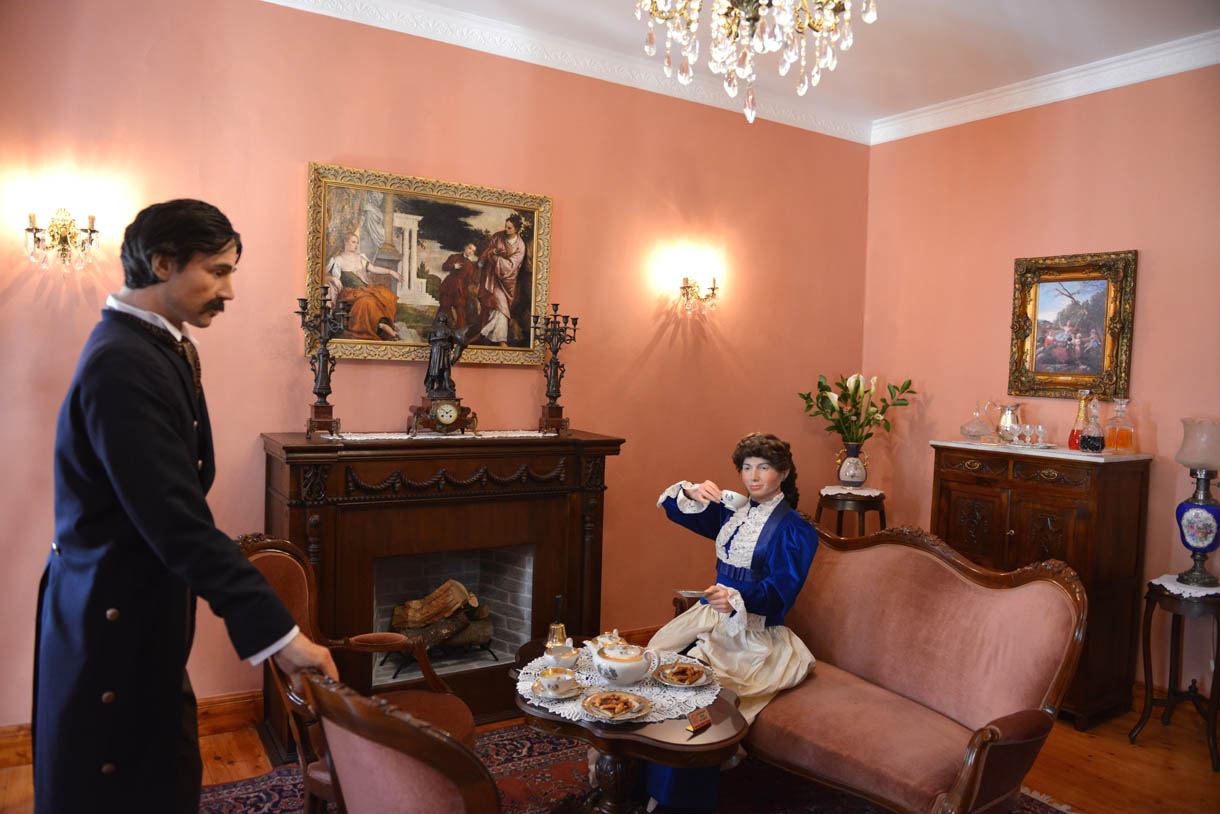
Museum Casa Parlante photo - credits: http://casaparlante.gr/
Set in the heart of the old Town of Corfu, Casa Parlante is a Living History Museum which opened its doors in 2014, with the aim of taking its visitors on a journey back in time to the beauty of a bygone era- the beginning of the 19th century, a period of great financial and cultural prosperity for Corfu. With its robotic human figures, period decor and furnishings, this beautiful mansion recreates the life of a noble family living in Corfu during the 19th century, uncovering also the island's multicultural heritage. As you enter the rooms of the house, meet the family and watch the Corfiot nobility life unfold before your eyes; sip your tea with the Countess in the living room, visit the Count in his personal study room or watch the cook preparing the most delicious local specialties in the kitchen. While you are exploring Casa Parlante, you will listen to your guides revealing unique stories about the past, and enjoy the sounds of beautiful music in the background as children are having their music lesson. Casa Parlante is open everyday of the week, 10.00 - 18.00 during the summer months (April- October); if you are planning to visit in the winter, please check before your visit.
5. Mon repos Museum

Mon Repos Palace was built in 1826 by the British Commissioner Frederic Adams as a gift to his Corfiot wife, Nina Palatianou. In the following years, the Palace was used as the summer residence of the British governors of Corfu and after the unification of the Ionian Islands with Greece in 1864, it was offered to the Greek Royal Family. An interesting but perhaps lesser known fact is that Prince Phillip, husband of Elizabeth II was also born here. Since 2001 the Palace has been operating as a museum, featuring numerous ancient and Byzantine exhibits from Paleopolis’ excavations, historical documents, prints, photographs as well as furniture, and other decoration objects from the Palace. The Palace is located in the beautiful Paleopolis - the ancient site of Corfu Town. A visit here is worth it for the museum but also for its surroundings - the Palace is surrounded by extensive lush gardens, which are filled with archaeological treasures that have been discovered in this area. Mon Repos Museum is open between 08.30-15.30 everyday of the week except for Tuesdays.
6. Museum of Capodistrias- Centre of Capodistrias studies

The Museum of Capodistrias - Centre of Capodistrias studies is Greece’s only museum devoted to the life of Ioannis Capodistrias - the first Governor of Greece but also a very significant political figure of Europe. The Museum is housed in Koukouritsa, one of Capodistrias family’s country estates which is located in the village of Evropouli, approximately 7km from Corfu Town. The museum's permanent collection contains official documents of historical significance, honorary gifts and medals, books from his personal library, as well as family portraits,religious artefacts and furniture. This wonderful collection allows visitors to embark on a journey through the life, legacy and personality of Capodistrias, but also to discover the history of Corfu, of the Greek Estate and Europe in the 19th century. After you explore the museum, sit back and relax and enjoy a cup of coffee from the charming museum’s café, surrounded by lush gardens and offering wonderful views out to the sea. The museum is open 10.00-16.00, everyday except for Mondays between March - November. Between December- February the museum is open by appointment only.
7. Byzantine Museum of Antivouniotissa
8. Sinarades Folklore museum
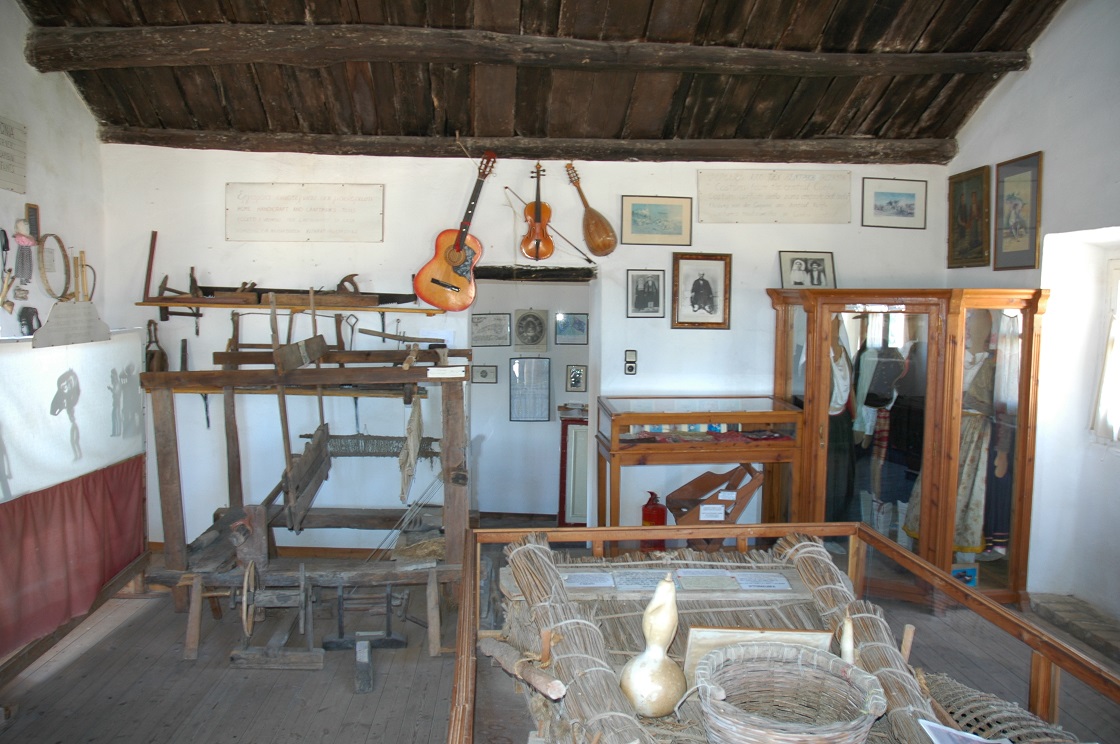
Established by the Historical - Folklore Society of Corfu in 1982 , the Sinarades Folklore Museum is perfect for those who wish to explore the authentic side of Corfiot village life. Located in the picturesque village of Sinarades, approximately 13 km from Corfu Town, the museum is housed in a traditional two-floor village house and displays historical and folklore material that depicts how people lived their everyday life in middle Corfu during the period 1860 - 1960. On the first floor of the museum, visitors can explore the real interior of a typical village house of that period including a portigo, kitchen, dining room, a hall and a bedroom. The second floor features a collection of agricultural tools, ceramics, household utensils, musical instruments, handicrafts, ceramic objects and Corfiot traditional costumes. One of the most interesting exhibits is a chunk of a papyrella raft made of cane fennel of a type used along Corfu's west cost until the 1950's. The museum is open daily from 09.00-14.00 during the summer season May-October but remains closed during the winter.
9. Corfu Annex of the National Gallery

Inaugurated in 1993, the Kerkyra Annex of National Gallery is located in the village of Kato Korakiana, approximately 14 km from Corfu Town. The collection features about 150 items (paintings and sculptures) from the National Gallery collection, representing different movements that have defined Greek art like the Ionian School, the Munich School, modernism, the generation of the 1930s, abstraction, the experimentalism of the 1970s etc. The collection features works of important artists including Domninikos Thetokopoulos (El Greco), Nikiforos Lytras, Nikolaos Gyzis Nikos Hatzikyriakos-Gikas, Yannis Tsarouchis and Yannis Moralis. One of the highlights of the collection is the ''Crucifixio'' painted by El Greco. The gallery also very often organizes activities for schools with the aim of engaging children with arts. Visitors can marvel at the artworks on display everyday of the week except for Tuesdays and the opening hours of the museum are as follows: 08.30-15.30 on Mondays, Wednesdays, Thursdays, Saturdays & Sunday and 10.00-14.00 & 18.00-21.00 on Fridays.
10. Banknote Museum
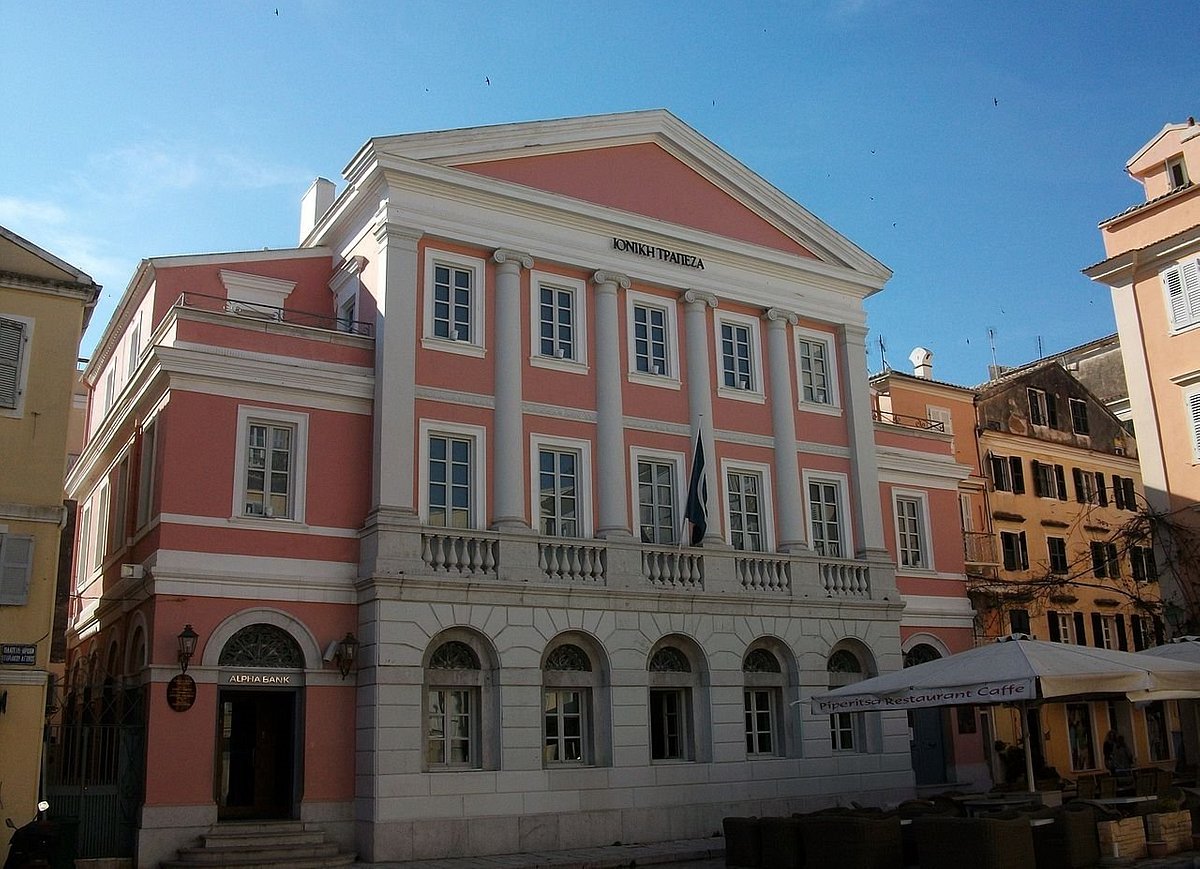
Established in 1981, Corfu’s banknote Museum, is Greece’s only museum solely dedicated to the history of banknotes in Greece, while it is also regarded as one of the most important museums of its kind in the world. The museum is housed in a large neo-classical building which the Ionian bank built as its head office in 1845-46 in the Square of Iroon Kipriakou Agona, in the heart of Corfu Town. The museum’s collection includes approximately 1500 pieces of Greek Banknotes which have been issued by the National Bank of Greece including the banknotes that were issued by the Ionian Bank from 1839 to 1920, as well as the first banknotes of the Greek State in 1831. The museum also includes the national banknotes of the Eurozone member states until the establishment of the Euro. One of the most rare exhibits is a Chinese banknote dating from the 1.300 A.D, widely considered one of the oldest ones worldwide. During the winter months (December- March), the museum is open to visitors between 08.00-15.00 - Tuesday-Saturday while in the summer (November-April) the museum is open daily except for Monday & Tuesdays with the following opening hours: Wednesdays & Fridays- 09.00-14.00 & 17.30-20.30 , Saturdays & Sundays: 08.30-15.00 and Thursdays 09.00-15.00.
